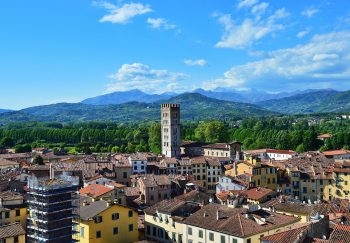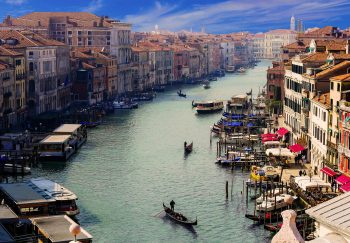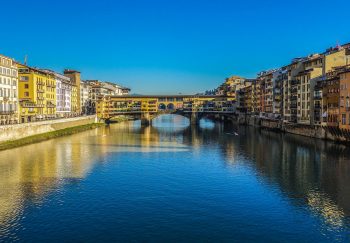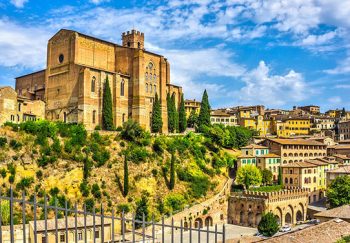A TV commercial used to show that paying with anything other than a credit or debit card was not only outdated but actively made life more difficult for everyone. This is a common American idea. I don’t carry any cash at home and can purchase anything I need with my card.
It is not the case for Italy.
Cash is the currency of Italy. Cash is the currency of choice in Italy. They pay for everything, from morning coffee to fancy dinners. Although some businesses will accept credit cards, most Italians prefer cash.
It’s important to remember that in Italy, you will need to have cash.
Traveler’s checks were essential for me when I started to travel during college. They could be converted into local currency. I am thankful that those days are gone and many of you will be familiar with how to withdraw money from foreign banks while traveling. Here’s a quick overview of how to get the cash you need when traveling in Italy.
How to Get Money in Italy: Before You Leave Home
Before you pack, let your banks know that you will be traveling. You should tell your banks which debit and credit cards you intend to use or what you think you might use. This will help them avoid thinking that someone stole your card and has taken off to Italy. It is as fun as it sounds. I can tell you that it is as enjoyable as the hours you spend calling your bank to confirm your travel plans. It’s not a free call, but it is not the way you want to spend your time.
Notifying banks about your travel plans is a good idea. Also, you can find out which numbers to call in an emergency. This information should be kept separate from your cards. You can also keep photocopies of the card number for future reference.
Ask about the fees for using your card in Italy. There may be two fees per transaction: a per-use fee, and a percentage for actual expenditure. You should use the lowest fee card if you have multiple cards.
Before you leave your home, make sure that you have memorized your 4-digit PIN. Italian bank machine keypads don’t have letters, so you will need to know your 4-digit PIN in numbers and not the 4-letter words you spell.
Sidebar Before I leave for work, I always convert some dollars into euros to have some cash on the ground. Although I try to find a taxi that accepts credit cards on my arrival day, if you do get to your apartment and need to store some food in the fridge, you will have enough cash to go to the grocery store. Travelex is my preferred method of currency exchange. However, if you have an account with your bank, many banks won’t charge any fees for foreign currency.
How to use Bank Machines in Italy
You’ve probably used your debit card from your bank to withdraw cash at home, right? With a few modifications, you can do the same thing in Italy to withdraw Euro bank notes.
Because you will likely be charged a per use fee each time you withdraw cash from the bancomat, it is a good idea to withdraw more than you would ordinarily. This is where I tell to keep your money in a wallet and use it correctly . The withdrawal limit for most Italian banks is EUR250-300 per withdrawal.
Here’s where Italy’s cash-centric culture clashes with its bancomats: the smallest bill given at most bancomats in Italy is EUR50. Anyone who has ever tried to break a EUR50 bill for something less than EUR20 will know the pain involved in this exchange. It’s impossible to change it. I only mention it to make sure you are prepared. You want to avoid paying large bills at a bar or restaurant after a bancomat.
It’s important to remember that cash withdrawals using your debit card are more common than your credit card. Cash withdrawals from credit cards can be expensive. It’s best to keep that money for emergency situations only.
Travel Safety: Bank Machine Safety
There are security measures for some bancomats, as mentioned above. If they are inside a separate vestibule, you can only access them by inserting your debit or credit card. However that is not foolproof. Thieves also have cards.
I am cautious in unfamiliar places and doubly so when it comes to money. I won’t use a bancomat if I feel even the slightest discomfort. Bancomats should be used during daylight hours, not after dark. If you feel something is not right, cancel the transaction or don’t start it.
ATM skimmers are a topic that has been discussed before. this article shows examples of skimmers and this another group of examples. This is not something you would encounter when traveling. A bancomat in Italy might not look the same as ours at home. This makes it difficult to know what to look out for when identifying something unusual. It is important to conceal your PIN when entering bank card information.
It’s not my intention to make you think that bancomat use in Italy is necessarily dangerous or more dangerous than using your home bank machine. And? And?
Find out more about
What to do if you have a problem with a Bancomat from Italy
My bank has also frozen my account because I didn’t tell them before I travel. I have also had my cards rejected by banks machines, though they are later accepted at the next machine, and my card stolen by a bank machine in Italy. Let’s just say the latter was a series of not-so-fun phone conversations back to my bank.
Regardless, I am merely stating that your card might not work sometimes for seemingly no reason. Even if you have changed the language of the bancomat from English to English, the error message can still seem gibberish. You will want to visit the bank to speak to a person.
It seems that banks keep irregular hours in Italy so it is best to plan your visit for weekday mornings. Evenings can be unpredictable and I have yet to discover a pattern in the afternoon hours. Mornings are better than afternoons. You can save yourself an entire weekend of pain by visiting the bancomat on weekday mornings. This way, if anything does go wrong, you will be able to walk straight into the bank to have it fixed.
* I will warn you that “but they shouldn’t do that” or “but they should treat customers more favorably” arguments won’t get you very far. This is true with me and the Italians. When we travel, we are visiting another person’s home and can’t dictate their business practices. I am here to help you navigate the cultural quirks that might appear when you travel to Italy. Not so that you can laugh at the Italians.











